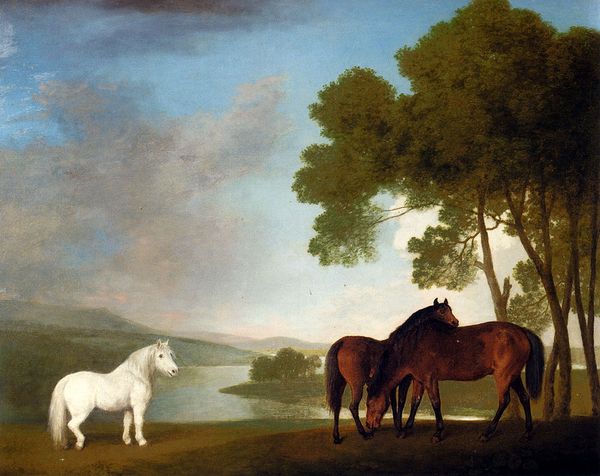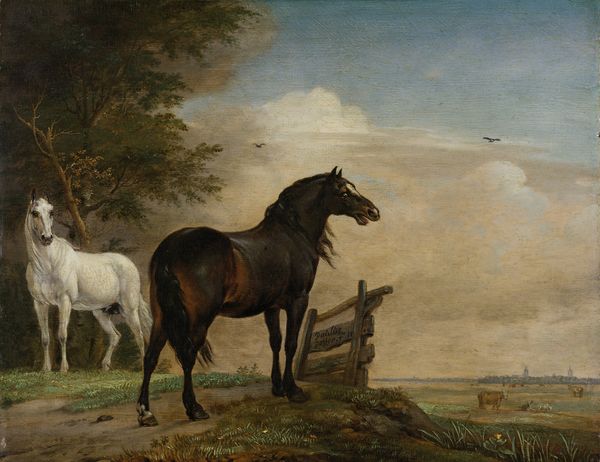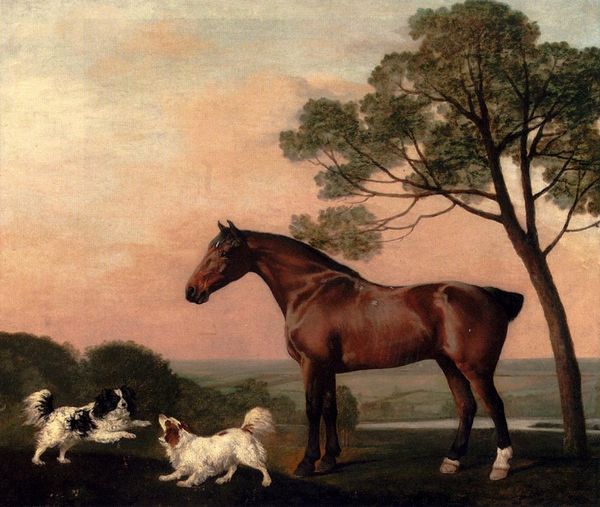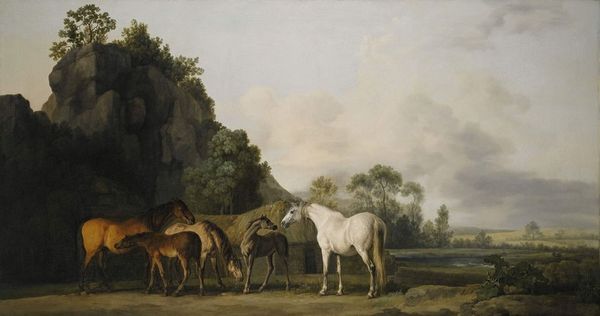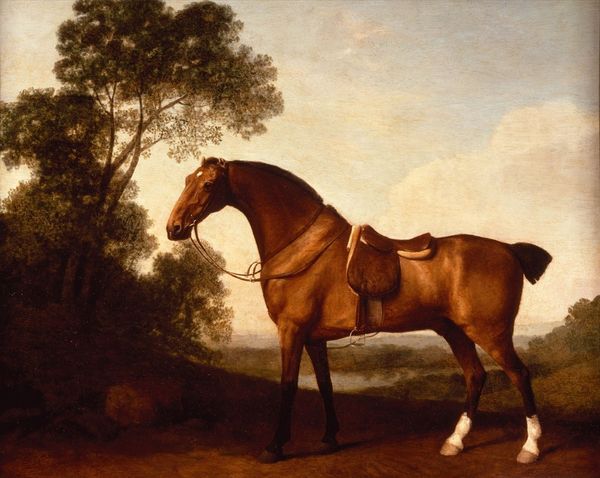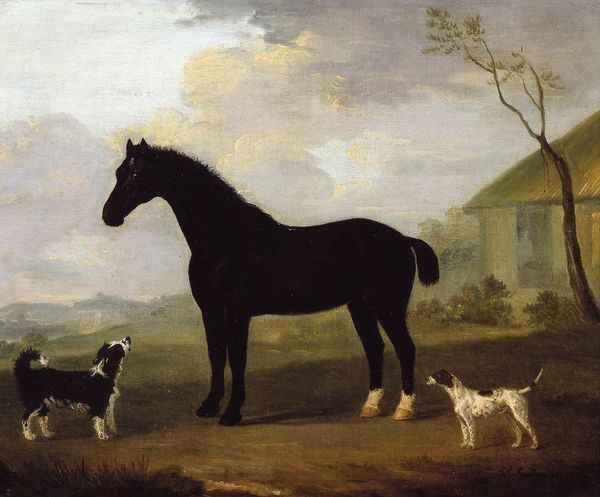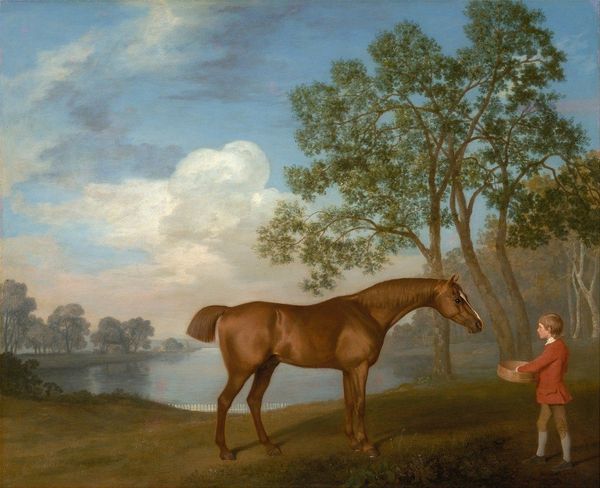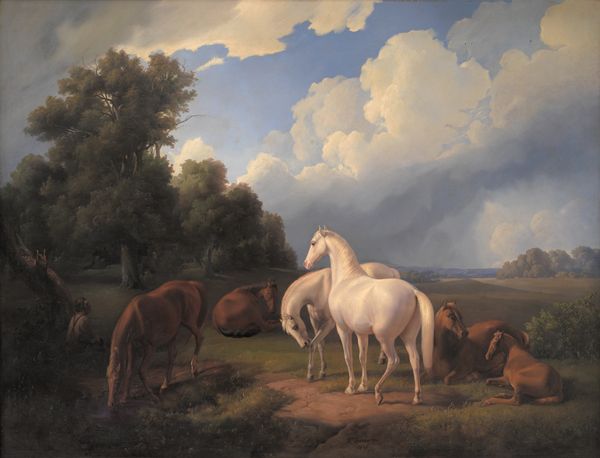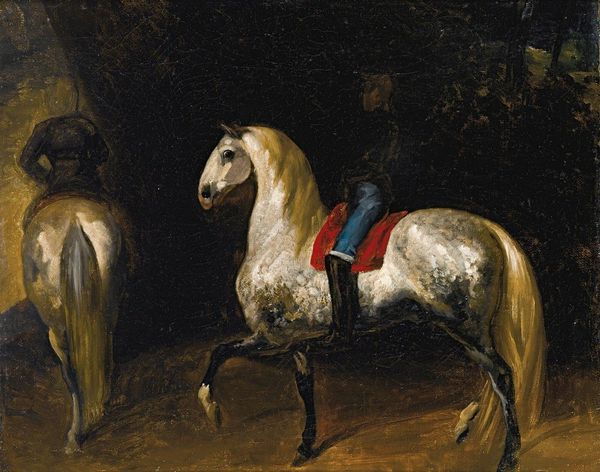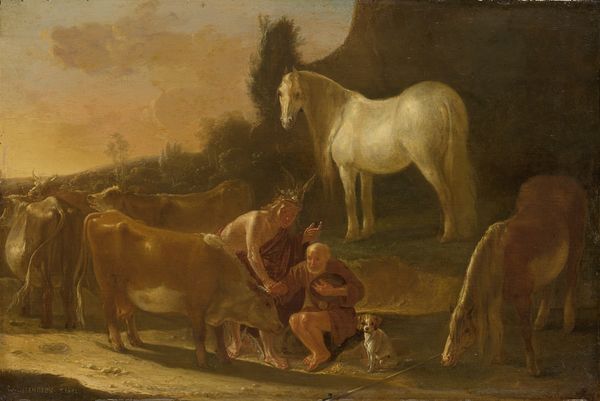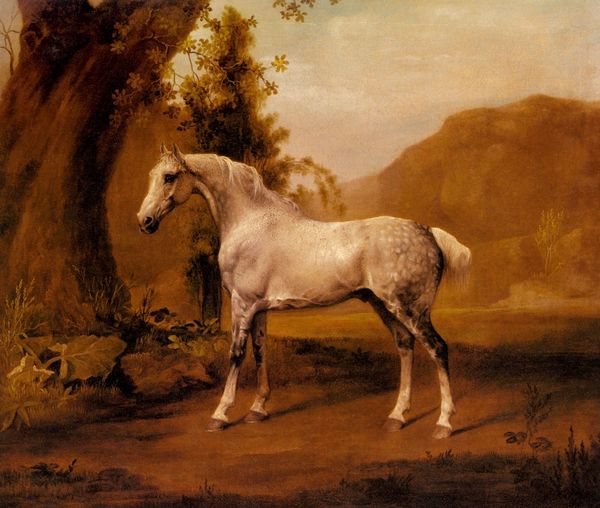
Dimensions: 101.6 x 161.9 cm
Copyright: Public domain
Curator: Immediately, I see a quietness, almost melancholic, emanating from this canvas. The horses seem still, thoughtful, and almost staged, which somehow is disturbing. Editor: This is "Mares and Foals in a River Landscape," an oil painting rendered in 1768 by George Stubbs. Here, at the Tate Britain, it’s a beautiful example of the genre painting so popular during his time, while also hinting towards nascent Romantic sensibilities. Curator: The white horse, especially, stands out—an almost mythical figure, especially framed against the darkening sky and clustered groupings of the others. Is it intentional, this division? Is it commentary on class and its intrinsic isolation, perhaps? Editor: The image certainly leverages equine symbolism. Horses, across cultures, embody freedom, nobility, and raw power. Notice how Stubbs contrasts the pure, almost ethereal, white mare with the darker, earthier tones of the others. That stark dichotomy can signify purity against grounded reality, or perhaps the aristocracy set apart from the working class, themes Stubbs would have certainly been aware of within the political landscape. Curator: I'm particularly intrigued by the mother and foal. There’s a vulnerability there. Stubbs’ placement, under the seeming protection of the dark tree, brings forward discussions around protection, nurturing, and perhaps also constraint. Are they truly free or are these subjects bound by expectations of a certain way of living, behaving? Editor: Stubbs, famed for his anatomical accuracy, undoubtedly observed such familial scenes, possibly seeking parallels between animal behaviors and human societal structures. He captured movement and form to reveal character. But look again at how the light renders forms, highlighting the musculature. Curator: Indeed. The rendering itself conveys a restrained emotional quality which gives way to this air of foreboding. The idyllic is only ever temporary. Is the darkness that I read just around the corner? Is the painting a prompt for resistance? Editor: Well, regardless of interpretation, Stubbs has bequeathed a powerful exploration of both natural beauty and social hierarchy for us to debate centuries later. It serves as a testament to art's endurance, constantly inviting dialogues across time.
Comments
No comments
Be the first to comment and join the conversation on the ultimate creative platform.

